« Hi. I'm Eva. Suck at romance, but love paradox. Can't write to save my life, but can't live without writing. Leave a message before you go. » navigation for mobile users Avatar: Boy In Space (via Instagram) Background: @w3rsip (via Instagram)
Don't wanna be here? Send us removal request.
Text
it's rotten work, but without the rot nothing can grow
160K notes
·
View notes
Text
Rage, Grief & Other Quiet Explosions
(Emotional meltdowns that don’t look like meltdowns, but absolutely are)
The “Smiling Too Much” Grief Your character’s entire world is on fire, and they’re asking if anyone wants more wine. That’s not denial, it’s an effort to hold the damn pieces together. Smile like a glue gun. Watch them crack.
The “Not Crying At the Funeral” Breakdown They don't shed a tear. They organize everything. Perfect speech. Perfect outfit. But a week later, they scream into the laundry basket over a missing sock. That’s the moment. That’s the eulogy.
The “Silent Dinner Table” Fight No yelling. No slamming doors. Just chewing. Clinking silverware. The kind of silence that tastes like metal. Let the reader feel the air shrink.
The “Polite but Dead Inside” Apology They say “Sorry” because it’s expected, not because they’re ready. Their voice doesn’t crack. Their eyes don’t meet yours. This isn’t healing. This is a peace treaty with no peace.
The “I Don’t Want to Talk About It” Detour The one where they ask about your day mid-sob. Redirect. Deflect. “Let’s not talk about me.” That’s rage choked by shame. Write it like it’s shoving itself into a smaller box.
The “Obsessively Productive” Meltdown New projects. New hobbies. Suddenly they’re running marathons, baking sourdough, fixing the garage door. Because if they sit still for one second, they’ll break. Keep the camera on them when they finally sit.
The “Unsent Letters” Grief They write it all down. Every damn emotion. Then burn it. Or delete it. Or hide it in a shoebox under their bed. It’s not for closure. It’s to let the ghosts know they were seen.
The “I’m Fine” That Echoes Delivered too fast. Too sharp. You could bounce a quarter off it. “I’m fine” isn’t fine. It’s the dam cracking. Listen to the echo. Let another character hear the hollowness.
The “Hyper-Logical Rant” Rage They argue with spreadsheets. With perfect bullet points. Cold rage—like ice, not fire. “I’m not mad, I’m just saying…” But that’s a lie. They’re volcanic under that clipboard.
The “Laughing in the Middle of the Breakdown” Moment That bitter, hysterical laugh. The kind that sounds more like sobbing with teeth. Let it come at the worst time. Let it shock even them. That’s emotion refusing to stay boxed in.
5K notes
·
View notes
Text
Repressed Emotion Scene Prompts
»» Saying “I’m fine” while their hands shake.
»» Laughing a little too loudly at something not funny.
»» Keeping their posture perfect while their jaw clenches.
»» Dodging emotional questions with charm or sarcasm.
»» “It’s not a big deal,” said like a prayer and a lie.
»» Crying alone in a bathroom stall.
»» Changing the subject every time it gets personal.
»» Numb silence after something devastating.
»» Scrubbing their hands like they can wash away a feeling.
»» Suddenly cleaning or organizing something—anything.
»» Avoiding mirrors.
»» Letting anger slip in where sadness lives.
»» Staring into space with their mouth slightly open, lost in it.
»» A tight smile that doesn’t even reach their cheeks.
»» Hugging someone stiffly—like they don’t know how anymore.
»» Not reacting when they should.
»» Punching a wall.
»» Pressing fingers to their temple like they're trying to hold their head together.
»» Keeping a secret so deep they forgot it was there.
»» “No, really. I’m good.” Said like a lie they need to believe.
1K notes
·
View notes
Text
Moral Dilemmas That Will Mess Up Your Character
» They witness a crime but helping the victim means exposing a secret that could ruin someone they love.
» They could save someone’s life… but only by hurting someone else.
» They’re offered everything they’ve ever wanted, by the worst person they know.
» They have to lie to protect someone, but the lie costs someone else dearly.
» They can bring justice, but only by breaking a promise.
» They’re given power, but to keep it, they have to become what they hate.
» They have the chance to take revenge, and it would be so easy. So satisfying.
» They’re the only one who knows the truth, but telling it would destroy someone’s faith.
» They could protect the many, by sacrificing the one. And the one matters to them.
» They promised not to get involved, but walking away would haunt them forever.
» They were wrong and admitting it now will shatter their credibility.
» They’re asked to forgive, and they know the person doesn’t deserve it.
» They have to pick a side, but both sides are flawed. Both will cost them something.
» They want to help, but they’re not sure it’s their place.
» They said they’d never become their parent and now they’re staring in the mirror, wondering if they already have.
» They catch their friend doing something terrible, but they owe them everything.
» They can’t tell if they’re protecting someone, or controlling them.
» They get what they want, but someone else suffers for it.
» They promised to keep a secret, but now someone innocent is getting hurt.
» They fall in love and realize it compromises everything they believe in.
6K notes
·
View notes
Text
“We are prone to anger to the extent that we feel insecure or lacking control with respect to the aspect of our goals that has been assailed — and to the extent that we expect or desire control. Anger aims at restoring lost control and often achieves at least an illusion of it.”
— Martha Nussbaum, Anger and Forgiveness
748 notes
·
View notes
Text
it's dusting-off-your-old-works-and-trying-to-reboot-them season. still trying to write the courting scene.
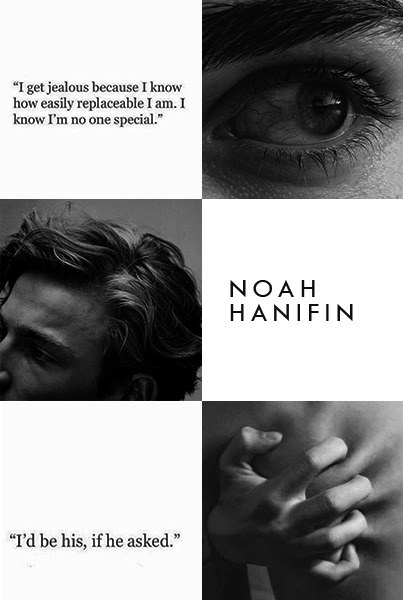
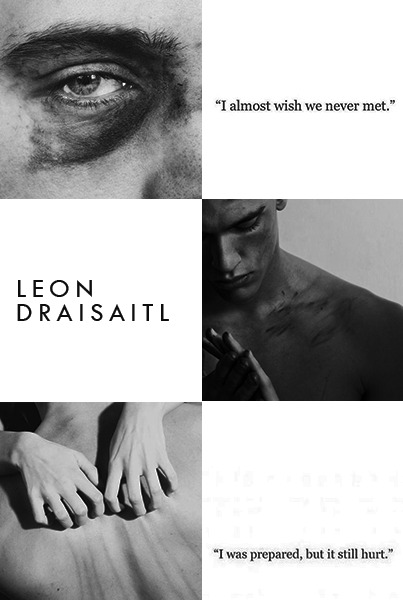

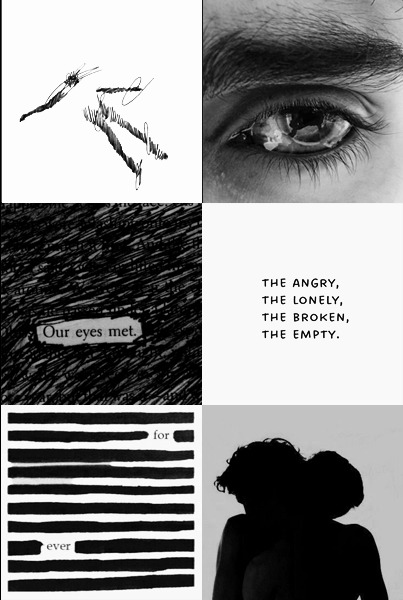

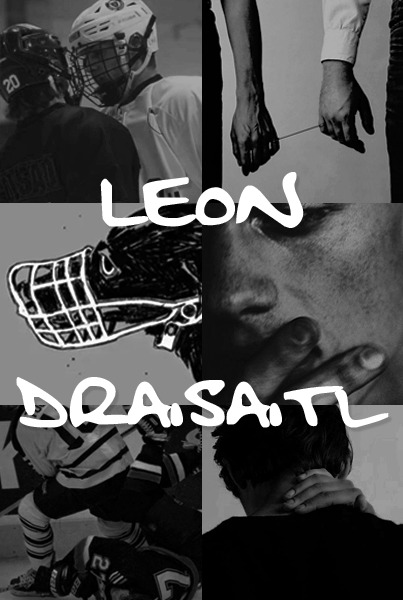
the amount of time i spent on Photoshop instead of writing, smh
1 note
·
View note
Text
first base is ripping each other's throats out second base is fucking and then pretending it didn't happen after it's over. third base is falling unconscious from blood loss in the other's arms
8K notes
·
View notes
Text
YALL. Holly Black has a list of resources she's used for writing her books on the fair folk. I'm OBSESSED. I love her work and world building. it's so true to the heart of faeries
19K notes
·
View notes
Text
M♥NSTER SPRING 2025 IS OPEN FOR SUBMISSIONS

Submissions for M♥NSTER Spring 2025 open February 15th and will close March 15th.
🖌️ Art - https://forms.gle/QN8VMCuLSkm2orSD7 🖋️ SFW Writing - https://forms.gle/zQ8do5WigS2eQYvB8 ✏️ NSFW Writing - https://forms.gle/7hmwCnPKeVAgfy6R9
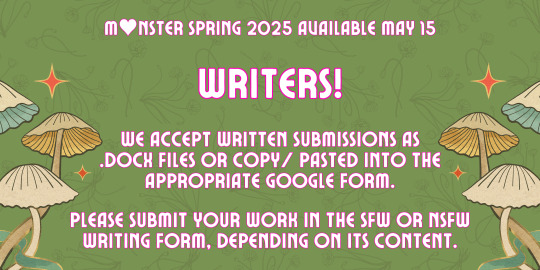
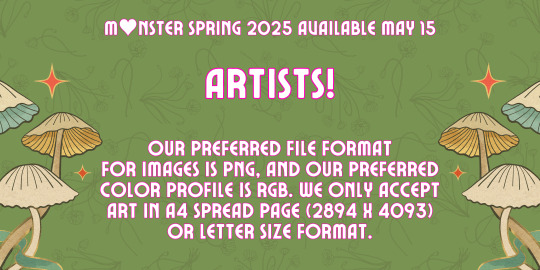
Plain text under the cut VVV
Writers! We accept written submissions as .docx files or copy/ pasted into the appropriate Google Form. Please submit your work in the SFW or NSFW Writing form, depending on its content.
Artists! Our preferred file format for images is PNG, and our preferred color profile is RGB. We only accept art in A4 spread page (2894 x 4093) or letter size format.
117 notes
·
View notes
Text
Structuring Complex Plots Made Simple
Complex plots can feel overwhelming at first—so many moving parts, characters, and events to juggle! But the good news? You don’t need to get tangled up in a web of confusion. Breaking down your story into digestible steps makes all the difference.
1. Start with a Simple Foundation
Every complex plot needs a solid starting point. Simplifying your central conflict can help anchor your plot.
Central Conflict: A young woman must navigate an oppressive society to save her brother. Plot Twist: The brother is actually the villain, manipulating her into becoming a pawn.
You don’t need to know every twist and turn from the beginning—just ensure the core conflict is clear and compelling.
2. Break Your Plot into Acts
Traditional three-act structure (beginning, middle, end) is a proven way to keep things focused.
Act 1: Establish the protagonist's goal (saving her brother) and introduce the villain. Act 2: The protagonist starts making moves to save her brother, but obstacles arise, leading to the revelation that he’s manipulating her. Act 3: The protagonist must choose between loyalty to family and standing up against the manipulative villain.
Breaking your plot into acts gives a roadmap—without it, things can get messy.
3. Use Subplots to Build Depth
Subplots enhance the main plot, offer character development, and increase tension. The key is to make sure they tie back to your central theme.
Main Plot: Saving her brother from an oppressive regime. Subplot: A growing romance between the protagonist and a rebellion leader. The relationship challenges her loyalties and forces her to question her motivations.
4. Create Stakes—And Raise Them
Keeping the stakes clear makes it easier to craft plot twists and dramatic moments. And don’t forget to escalate the stakes as the plot moves forward!
Initial Stakes: If she fails, her brother will be executed. Escalating Stakes: If she succeeds, she’ll be forced to take over her brother’s corrupt position in the regime, forever compromising her values.
5. Use Character Arcs to Drive the Plot
The plot shouldn’t just happen to the character—it should be shaped by their decisions, growth, and challenges.
Character Arc: The protagonist starts out loyal to her brother but slowly grows to question the values she was raised with. Plot Impact: Her arc causes her to defy her brother and ultimately join the rebellion.
Your character's internal journey should influence how the plot unfolds—this gives your story emotional weight.
6. Keep Track of Timeline & Pacing
Complex plots can involve jumping between timelines or multiple locations. Keeping a timeline or outline ensures you don’t confuse yourself or your readers.
Timeline: The story starts in one city, but the protagonist must travel to another to join the rebellion. They leave in winter, and by the time they arrive, it’s spring, signaling a shift in both setting and mood.
7. Use Foreshadowing Without Overloading
Foreshadowing hints at key plot points, creating anticipation without giving everything away. The trick is to keep it subtle.
Foreshadowing: Early on, the protagonist notices her brother’s growing coldness, which seems like a small detail but becomes significant when his manipulation is revealed. Subtle Clue: An offhand comment from a friend: “I wonder how much your brother has really changed?”
8. Allow for Setbacks & Surprises
Things shouldn’t always go according to plan. Introducing setbacks makes your plot feel more dynamic, realistic, and unpredictable.
Setback: The protagonist makes a bold move to save her brother, but it backfires—she’s caught and imprisoned by the regime. Surprise: The rebellion leader, whom she trusted, turns out to have been working with the enemy all along.
9. Tie Loose Ends Together in the Climax
Why It Works: The climax is where everything you've been building finally comes together. Tie in multiple storylines or character arcs in this moment to create a powerful payoff.
Climax: The protagonist must confront both her brother (the villain) and the rebellion leader in a final battle. Tied Elements: Her love for her brother, her trust in the rebellion leader, and her loyalty to her values all collide in this moment.
The climax should feel like a natural culmination of everything that’s happened, providing resolution and emotional payoff.
10. Keep the Ending Open to Interpretation
Complex plots often leave some questions unanswered, but in a way that feels satisfying. Open-ended conclusions can make your plot linger in readers’ minds.
Ending: The protagonist defeats the villain, but the regime is still in power. The rebellion is fractured, and her brother’s fate is uncertain. Interpretation: Did she really win? What will she do next?
Building a complex plot doesn’t have to be a headache. By breaking it down into manageable steps, you can craft a story that’s rich in layers, full of twists, and grounded in character development. Keep your focus on the core conflict, build in obstacles, and don’t forget to let your characters drive the plot. You’ve got this!
858 notes
·
View notes
Text
“The body politic, like the human body, begins to die from its birth, and bears in itself the causes of its destruction.”
— Jean-Jacques Rousseau, The Social Contract
602 notes
·
View notes
Text
PSA to all historical fiction/fantasy writers:
A SEAMSTRESS, in a historical sense, is someone whose job is sewing. Just sewing. The main skill involved here is going to be putting the needle into an out of the fabric. They’re usually considered unskilled workers, because everyone can sew, right? (Note: yes, just about everyone could sew historically. And I mean everyone.) They’re usually going to be making either clothes that aren’t fitted (like shirts or shifts or petticoats) or things more along the lines of linens (bedsheets, handkerchiefs, napkins, ect.). Now, a decent number of people would make these things at home, especially in more rural areas, since they don’t take a ton of practice, but they’re also often available ready-made so it’s not an uncommon job. Nowadays it just means someone whose job is to sew things in general, but this was not the case historically. Calling a dressmaker a seamstress would be like asking a portrait painter to paint your house
A DRESSMAKER (or mantua maker before the early 1800s) makes clothing though the skill of draping (which is when you don’t use as many patterns and more drape the fabric over the person’s body to fit it and pin from there (although they did start using more patterns in the early 19th century). They’re usually going to work exclusively for women, since menswear is rarely made through this method (could be different in a fantasy world though). Sometimes you also see them called “gown makers”, especially if they were men (like tailors advertising that that could do both. Mantua-maker was a very feminized term, like seamstress. You wouldn’t really call a man that historically). This is a pretty new trade; it only really sprung up in the later 1600s, when the mantua dress came into fashion (hence the name).
TAILORS make clothing by using the method of patterning: they take measurements and use those measurements to draw out a 2D pattern that is then sewed up into the 3D item of clothing (unlike the dressmakers, who drape the item as a 3D piece of clothing originally). They usually did menswear, but also plenty of pieces of womenswear, especially things made similarly to menswear: riding habits, overcoats, the like. Before the dressmaking trade split off (for very interesting reason I suggest looking into. Basically new fashion required new methods that tailors thought were beneath them), tailors made everyone’s clothes. And also it was not uncommon for them to alter clothes (dressmakers did this too). Staymakers are a sort of subsect of tailors that made corsets or stays (which are made with tailoring methods but most of the time in urban areas a staymaker could find enough work so just do stays, although most tailors could and would make them).
Tailors and dressmakers are both skilled workers. Those aren’t skills that most people could do at home. Fitted things like dresses and jackets and things would probably be made professionally and for the wearer even by the working class (with some exceptions of course). Making all clothes at home didn’t really become a thing until the mid Victorian era.
And then of course there are other trades that involve the skill of sewing, such as millinery (not just hats, historically they did all kinds of women’s accessories), trimming for hatmaking (putting on the hat and and binding and things), glovemaking (self explanatory) and such.
TLDR: seamstress, dressmaker, and tailor are three very different jobs with different skills and levels of prestige. Don’t use them interchangeably and for the love of all that is holy please don’t call someone a seamstress when they’re a dressmaker
20K notes
·
View notes
Text
Draco is THE antagonist of the story and I'm lowkey sick of people diminishing his character's importance in the story and to Harry's character development. so I'm writing an essay about how Draco as a character is fucking important especially his antagonistic arc
💅
1. The crumbs:
First of all, and this doesn't get mentioned often, Draco is the first magical kid Harry meets his age.
Not only that, he is our first glimpse at two major upcoming conflicts in the series: Blood Supremacy, and Hogwarts houses.
Draco plays the important role of the narrative foil to Harry. (even wikipedia references them in the "foil" page)
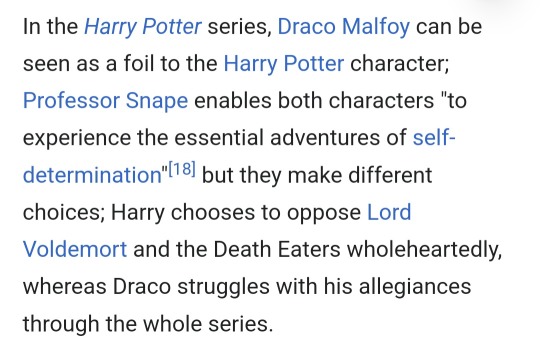
Draco's main function as a character is to showcase Harry's best traits, through being his most worst. Unlike, Snape and Voldemort, Draco is more concerned with creating internal conflicts for Harry than external ones.
He is the character that says mudblood the most, with the frequency decreasing every book. He is the character that plays with/teases/bullies the psychological vulnerabilities of the trio (specifically Ron and Harry). He is one of the few characters that give rational criticism (against Hagrid, calling out the trio dynamic..) that, taken outside the keyframe imposed by the author, can showcase the flaws in Harry's views and his bias. He is also the only character that shows moral self-reflection that isn't motivated by either a reward or "love", which not only serves as character development for Draco but for Harry too who grows to sympathize with Draco, a small breakup from his fixed binary morality.
Draco is also a very active character. His actions and choices affect the plot. The majority of the first book literally happens because of his dumbass. In the second book, he is our first introduction to the word mudblood, he's also the main suspect to the two main mysteries. If Draco wasn't such a bitchass, would buckbeak gave been in said place for Harry to use him to save Sirius?
He is important narratively but what interests me is his importance to Harry's arc.
What separates Draco from other antagonists is that he creates internal conflicts that stem from his personal conflicts with Harry, because of Harry as a person. Not because Harry's the chosen one standing in his way, not because Harry's lily or James's son. Because Harry's Harry. and this exchange is mutual.
Their personal dynamic is set up in their first meeting. Harry, upon hearing two sentences from Draco, reacts negatively because of deeply personal issues (Dudley). I don't think Harry reacts personally to any other characters the way he did with Draco? Considering that Draco wasn't even hostile in his first sentences.
While Draco targets both Harry and Ron, there's a clear difference in how Draco bullies them both but also how Harry and Ron perceive Draco.
Draco is crueler on Ron. And his bullying doesn't feel personal, just apathetic, humiliating and mean. It feels like Draco is more cruel on Ron because Harry chose Ron over him and it shows by Draco coming back every now and then searching for Harry's compartment, trying to egg him, to look for a way that will make Harry regret rejecting Draco.
About Harry & Ron perception about Draco, it's showcased in the second book by the two main major events Draco was suspected in
1. Opening CoS. It was Ron who suspected Draco for this, not Harry. Ron suspects Draco for an action that affects everyone in the school.
2. Sending Dobby. Harry suspects that it was Draco that sent Dobby to prevent Harry from coming to school. Harry suspects Draco of an action that targets him specifically, and his reason of suspect? "because Malfoy hates me". It's personal.
Another instance of Harry making every issue personal with Draco: In the fifth book, after the sorting hat's song about houses unity
'And it wants all the houses to be friends?' said Harry, looking over at the Slytherin table,where Draco Malfoy was holding court. 'Fat chance. '
I'm also pretty sure the reason why Harry chooses not to be in Slytherin was 50% because Draco got sorted into Slytherin. the other 50% being Hagrid telling him that Slythering are eviiil. Btw a conversation that wouldn't have happened if Draco hadn't brought up houses in their first meeting.
Like I said, most of the plot in the first book goes back to Draco.
My main point is that the relationship between Harry and Draco as characters is beyond goals, motives, obstacles, moral causes bla bal bla, and is on the spectrum of "I took that personally".
2. the main plate:
Draco transitioned in the sixth book from an antagonist to a "side character" with a life. His role as character no longer functioned by his connection to Harry.
and this is where a flip of dynamic happened, where Harry became the antagonist to Draco's arc.
He's the one following him. He's the one egging him on (in the first 5 books,it was always Draco starting conversations with Harry, but in the sixth book, it's mostly Harry who started conversations with Draco) He's the one hurting him (Sectumsempra) (even on accident). He's the one trying to create obstacles to Draco's goal.
and why is that? why was Harry so obsessed with Draco?
If it were because of a moral righteousness, then why not focusing on Snape who's probably more suspicious? like who cares about Draco.. yeah he's sus but Dumbledore says it's not important..
This line of thought is more Ron and Hermione because they don't share the kind of deep personal issues towards Draco like Harry does.
so why is harry so obsessed?
"Harry, knowing and loathing Malfoy, was sure the reason could not be innocent."
This line in the sixth book explains it. Harry knows and loathes Draco with more emphasis on *knowing*.
Harry admits that he knows Malfoy, of course the fruit of labor of staring at Draco for five years, but why does he even stare in the first place? Because Harry is curious about Draco.
In comparison with Snape and Voldemort, our other antagonists, Harry doesn't show the same enthusiastic curiosity for them. At least not the same way he does with Draco. Most of what we know about Snape and Voldemort are shown through external ways. Either their memories of memories of other people about them. Their character arcs happen outside Harry's vision, either in the past or in a memory. It's not Harry who seeks those information. They come to him.
Draco, on the hand, most if not all of his character development happens in front of Harry. From his bullshit in the five years to him crying in the bathroom, him lowering his wand, him lying in the Manor. even the visions that Harry sees through Voldemort about Draco torturing Rowle, are happening in the present. Draco's character development is laid bare in front of Harry.
but back to his obsession in the sixth book, it's because Harry knows Draco so well that not only he's right about him being a DE, but "Malfoy being up to something" is not something new to Harry, it's actually a normal thing that kept happening for 5 years of his life. Malfoy was always up to smtg. It's this idea of a normality that fuels like a new purpose in life for Harry after being wrecked by Sirius' death. Not only the mystery tingles his detective neurons, he knows he's right about Draco which only fuels his persistence. Draco being a person he hates also downplays the guilt/shame Harry could feel while stalking him. like I'm sorry but Harry was shameless and embarassing the whole year. The way Hermione and Ron looked at him sometimes so funny, also Hermione distancing herself from Harry when he talked to McG about Draco like "idk this person". Harry was kinda giving pre-HBP Draco vibes lowkey.
This shows that Harry himself is motivated by personal feelings (though negative) as an antagonist to Draco's arc himself.
And the important point here is the flip of dynamics. Draco is not just a mere side character in Harry's life. If anything, the moment he tries to become a side character with his is own arc, Harry is forcing himself in it. Because they're both foils to each other. It doesn't work on just one side.
The dessert:
The dynamic completely evolves again with the end of HBP as Draco gains a moral sense and Harry watching Draco's character development unfolding gains a more nuanced view than his old black/white one.
In DH, Draco and Harry are not antagonists anymore to each other. Draco and Harry are kind of heroes to each other?? as they both try to save each other like two times.
A lot of people downplay Draco's lie in the Manor, comparing it to Dudley's "You're not a waste of space" as "character development" moment.
bruh.
Dudley said that after Harry saved him. Draco literally was the one who took the initiative to lie, expecting no reward, literally had more to lose by lying, he was literally acting against his own interests, his family's life was in danger!!! Harry saved Draco after Draco saved him.
also Draco's character development started with him lowering his wand.
but back to being each other heroes. Our other comparison is Ron who is in both situations where Harry saves Draco but he's the one reacting negatively and complainig about them saving Draco, not Harry. Which is funny because Ron says "we saved you" but in both cases it's Harry who's doing the saving and Ron is just there witnessing, and again I don't think he still realizes what was happening since the sixth year. He thinks his hostile feelings towards Draco are the same ones Harry has. That they're similar. Ron.. Harry literally almost risked your life to save Draco.
It also speaks of character development from Harry that he's not reacting negatively anymore towards Draco. He grew out of it. Like Draco also was starting to grow out of his toxic ideologies.
They're both growing up simultaneously.
And Draco was The first wizard kid Harry talked to (with no precognition or insidious motive)
Draco was the first character who he flew with
Draco was the first character who he dueled with
and so in DH,
Draco was the first character who tried to help Harry with no selfish motive
Draco was the first character that flew with Harry on the same broom (at least I think so?)
Draco was the first and only character whose wand Harry dueled with against Voldemort and won.
I wish I could write more. About Sectumsempra. About wand connection. but I'm tired.
220 notes
·
View notes
Text



Dying a little over Connor McMichael's super dramatic embrace of Stromer after his go-ahead goal.

156 notes
·
View notes
Note
the strome goal this evening plus the mcmichael behind the back/prom pose hug 10/10
ANON ARE U IN MY BRAIN...........
44 notes
·
View notes
Text

brat who's had love and affection all his life vs neglected touch aversed orphan
218 notes
·
View notes
